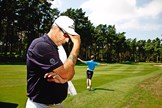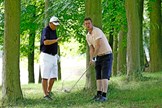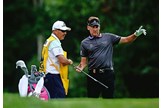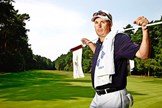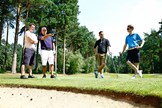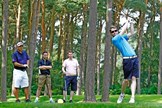How many shots could Ian Poulter’s caddie save YOU?
Last updated:
Earlier this week, we brought you an interview with Ian Poulter’s caddie, Terry Mundy, lifting the lid on exactly what life is like as a caddie on tour. During that interview, Mundy also offered some tips that he insisted would help amateurs save several shots per round. Now, we’ve decided to take things one step further and put him to the test.
We set Mundy a challenge greater than any he’s likely to face on Poulter’s bag: caddie for three amateur golfers, of varying ability, and help them all score better. Here’s what went down…
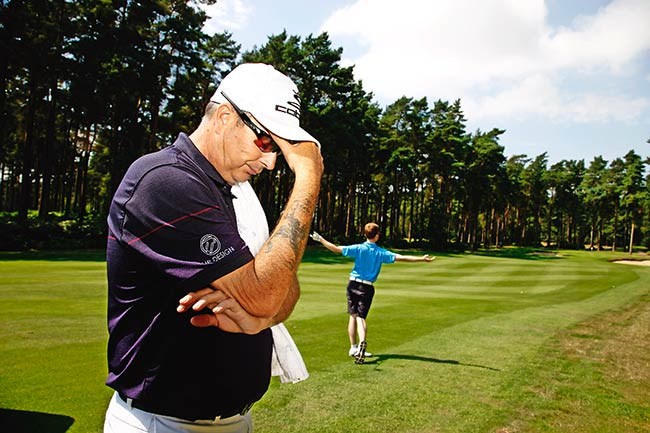
It is 10.24am and as three nervy amateurs – Hans Seeberg (24hcp), TG’s Joe Downes (16) and Lewis Remington (two) – stand on the first tee of the Duchess’ Course the goal is simple – to discover just how a professional caddie would set about improving the scores of three mere mortals. Mundy believes he could reduce the average club player’s score by up to five shots – effectively knocking a hole off our score. How would he set about that?
“What are you doing?” I hear as I pull my 6-iron out of the bag on the daunting 182-yard par-3 2nd. I feel like I’m back at school as I cower under Mundy’s glare. “On that first hole you had a similar yardage for your approach,” he explains. “You pulled 6-iron and came up short.”
I’m mumbling something about feeling more comfortable with my 6-iron when Terry spies my 4-hybrid. “What about that thing then?”
I have never felt good with the hybrid, so much so that I spent the entirety of our deliberations on the first fairway trying to hide it from him. He softens. “Look, just trust your swing. You are far better off swinging smoothly with that than trying to muscle a 6-iron to a distance you can’t hit.”
Hybrid out, I feel a mixture of nerves, anger and enlightenment. I swing smoothly as instructed and find the fringe, just past pin high. “There we go!” is the cry from Mundy who has already scampered off to assess my next shot. “That’s lesson one. Now let’s see what
we can do.”
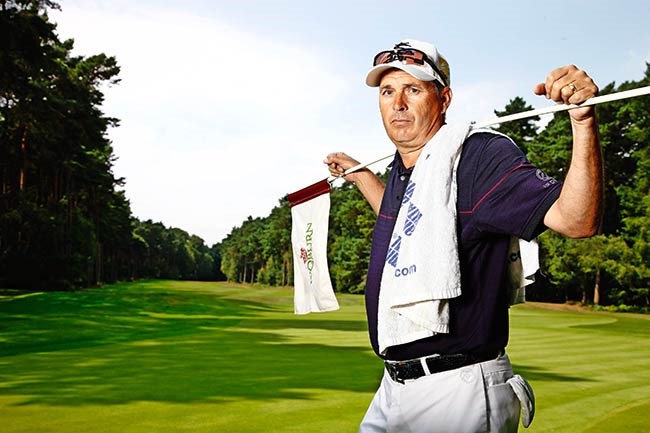
The round is going well and I’m hitting hybrid for safety off nearly every tee on this incredibly tight track. “It’s the most common fault I see in amateurs,” he explains later. “99 per cent of golfers with handicaps between around 10 and 24 hit it shorter than they think – I’d bet money on it. I would advise everyone, especially in this handicap bracket, to go somewhere with a TrackMan or FlightScope launch monitor. It might surprise you to know how far you can really hit a club, but it’s so important that you do.”
Lesson one completed, the second comes at the par-4 9th. I’m playing well now and pull driver. I feel the need to explain the decision to Terry, who says nothing but seems happy enough with my assertion of leaving a full wedge in. I leak it right and find the trees. Not a word from Mr Mundy.
Thankfully the pines are quite sparse here and a pause to let the two-ball behind through – containing Charley Hull, who finds middle of the fairway, middle of the green, bottom of the cup – allows me to assess my options.
I’ve got just over 100 yards left and there’s a tantalising gap in the trees. It’s tight, but I think I can make it. With a simple chip-out available I can feel Terry’s eyes burning the back of my head as I take out the 7-iron. He steps in. “Really?”, he asks. “That gap’s not very big. You get a shot on this hole: use it. You’ve made a mistake off the tee and that’s fine, we all do it, but don’t make it worse now. It’s this type of situation where I could save someone like you four or five shots every time you go out.”
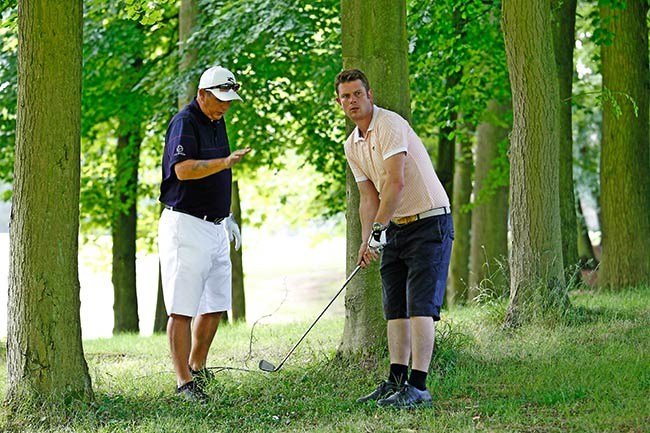
Wisdom imparted, Terry departs the scene. I try the low chaser through the trees but it catches a branch, leaving me no shot for my third. I’m forced to chip back down the fairway and end up making six. Terry says nothing, but the very silence shouts at me.
I wonder how often his employer displays the same foolish disregard for his advice. “I remember the US Open at Bethpage Black in 2009,” he says. “It was only the Thursday and he wanted to take this ridiculous shot on. There was a big crowd by us and they were all listening. He was saying, ‘It’s alright, the gap’s big enough’. He wanted to hit a 3-wood and
I wanted him to play safe and use a 6-iron. I gave him the iron and started walking off with the bag. He was calling me back but I kept going. There are times when you have to say, ‘Come on mate, behave yourself!’ But the bottom line is he’s the boss. Normally I’ll say it twice and the third time I’ll say, ‘OK, this is on you then.’
“You’ve got to tell them where they can be aggressive, but there’s a difference between aggressive and stupid. You’re sometimes there to curb that, but at other times you’re there to remind them how good they are. When confidence is down they sometimes need picking up, though the confidence side of things isn’t too much of a problem with Ian!”
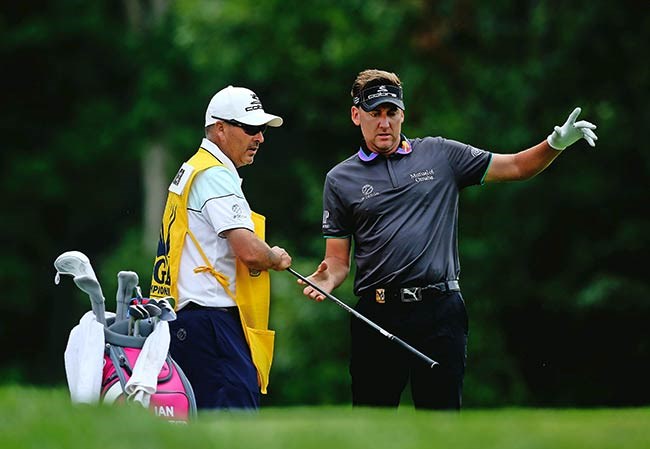
After the learning curve that was the front nine I feel settled as we start the back nine and go on to score on every hole, even making net birdies from the 16th to the clubhouse. Mundy is matter-of-fact and I don’t mind admitting that I was intimidated by him at first – made more so by the 6-iron incident. But that quickly changed as my appreciation of how Mundy’s role is a fine balance between assertiveness and sympathy grew.
“You’ve got to say the right thing at the right time,” he says. “With Ian, I’ve learnt when he needs a shoulder to cry on, when he needs a kick up the arse and when he needs you to say absolutely nothing.”
Terry’s advice for a 2-handicapper
You need to take some risks and you’re good enough to pull them off, but my advice is simple: don’t take risks where you don’t need to.
If you’re playing off this kind of handicap then you’ll improve by repeating everything. Your good shots are very, very good, but you still need consistency. Getting from a two to a one handicap is ridiculously difficult – it’s about tightening everything up. You might see improvement by going to a coach to iron out any tiny kinks in your game. Course management-wise you’re off two for a reason and this side of your game is usually quite sound, but you still need to be sensible about club selection. Take a 340-yard par 4, for example. A lot of golfers of this standard will immediately reach for the driver, try to blast it 300 yards and leave a 40-yarder. You’ve got to think that a 250-yard tee shot will leave you 90 yards which is a lot easier to hit as it’s a full shot.
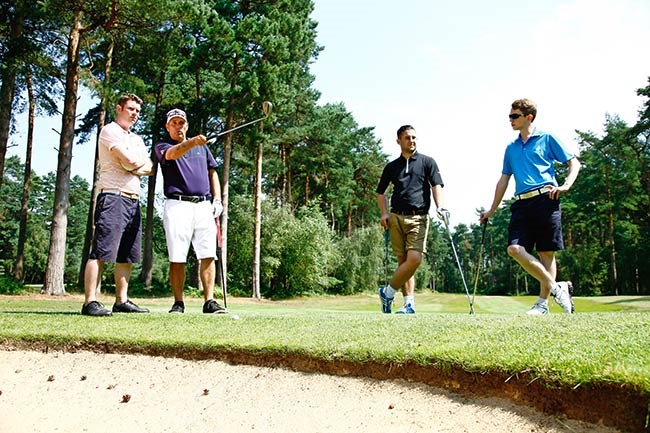
Terry’s advice for a 16-handicapper
It’s the most dangerous handicap. You have a good idea of the game, but typically have a bit of an ego. I’ll often find a higher-handicap player has the golfing intelligence to know their limitations, whereas a 16-handicapper won’t. They’ll take on shots that are way too ambitious.
What you’ve got to accept in golf is that it’s an absolute statistical fact that as you go up the clubs, the longer the shaft is and the more the dispersion is. I hear people saying “I love my 3-wood, it’s my favourite club.” But if you hit it on a hole you shouldn’t, the chances are you’re going to be in the trees.
Use technology to find exactly how far you hit each club. You’ll be shorter than you think, but it’ll make such a difference. You shouldn’t be trying to over-hit. Take a club more and swing smoothly. Assess the conditions and the course. If it’s tight you’re better off hitting two hybrids into a 400-yard par 4 than risking driver off the tee then going too hard at a short iron.
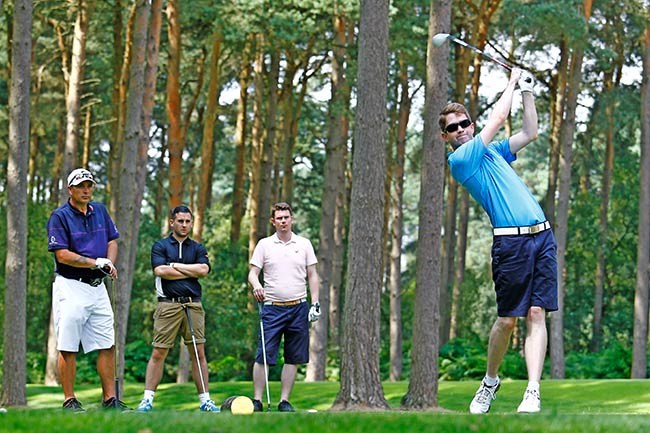
Terry’s advice for a 24-handicapper
You’ve got to play golf with your handicap in mind. I’ll see people trying to chip over a bunker and attack the pin, but 90 per cent of the time they will make a mess of it. Forget about trying to pull off that Phil Mickelson flop shot, it isn’t going to work.
You can get into trouble by rushing your tee shots and spraying it all over the place. When your swing is technically weaker it’s more likely to go wrong the faster you do it. Slow everything down and make it about rhythm. Even if you only hit it 100 yards, just let the ball get in the way of a nice, smooth swing.
You don’t have to use your driver on every hole; these little utility clubs that hit it 200 yards are great. Practise your driver away from the course and introduce it more as your handicap comes down. You see exactly the same shot as a pro does, you just don’t have the technical ability to pull it off. Keep it simple, understand why you’re off 24 and play to it. Your scores will quickly improve.
